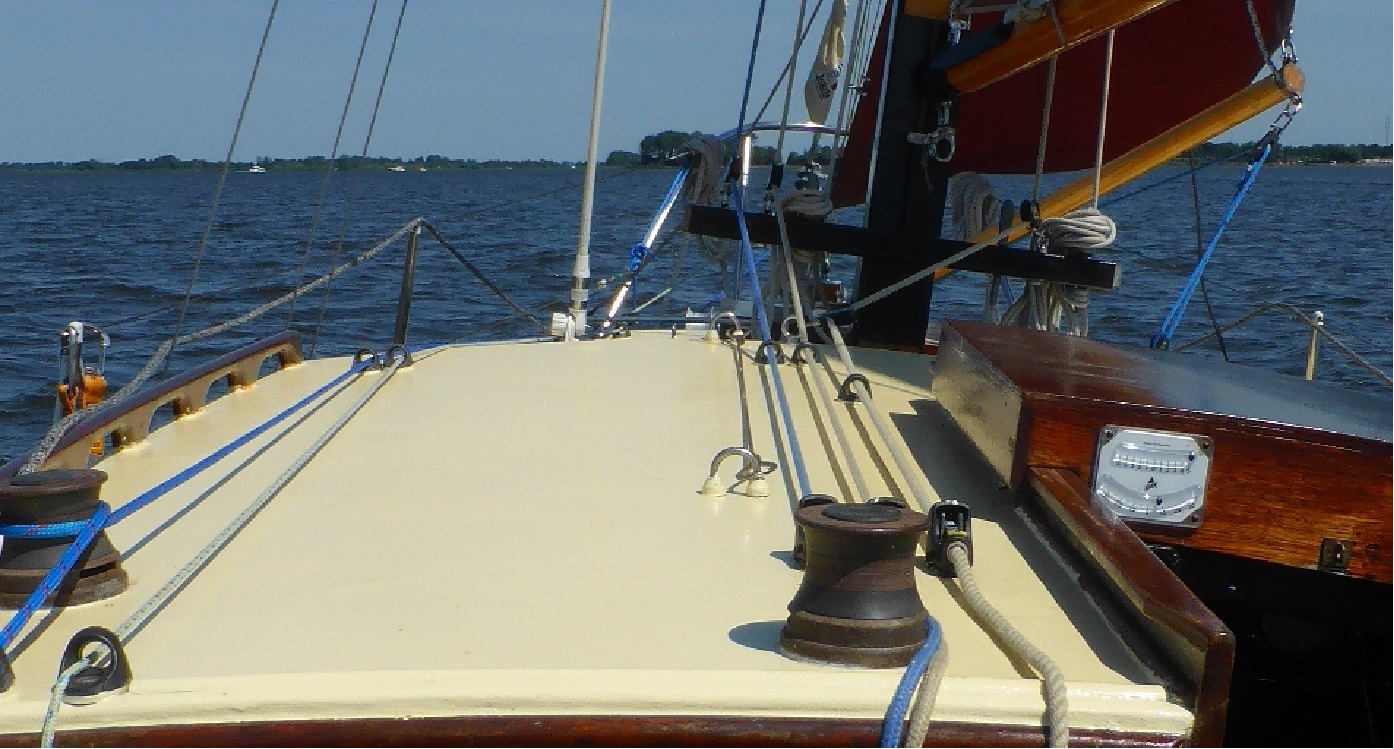
Lines coming back to the cockpit, L to R: foresail sheet (blue, controlling the foresail boom); jib furler (yellow); stainless safety line; foresail halyard (blue); mainsail throat halyard (natural, braid); peak halyard (natural, laid). Each winch has 4 bolts, so 2 passed through deck beams and the other 2 required a plywood pad. The fairleads are screwed through deck beams. Spinlock PXR cleats require 2 fixings each: one through a deck beam and the other through a plywood pad adjacent to the beam.
I took the opportunity of buying a couple of second-hand Tufnol winches last year (2022), to make it possible to pull in Lady Christina’s foresail boom in a blow. The sheet arrangement gave only a 2:1 purchase, but a ratio of 4:1 introduced too much friction for the boom to pay out in light winds. This foresail sheet, alongside the jib furler, were already leading back to the cockpit and secured on a couple of vertical cleats on the bulkhead. But the idea was born of bringing other lines aft as well. Mary on the tiller was always unhappy to watch me dancing on the roof to work the halyards on the pin rail at the foot of the mast, especially when the boom became unpredictable upwind. And my hands were getting less resilient to the demands of sweating up the foresail and mainsail peaks.
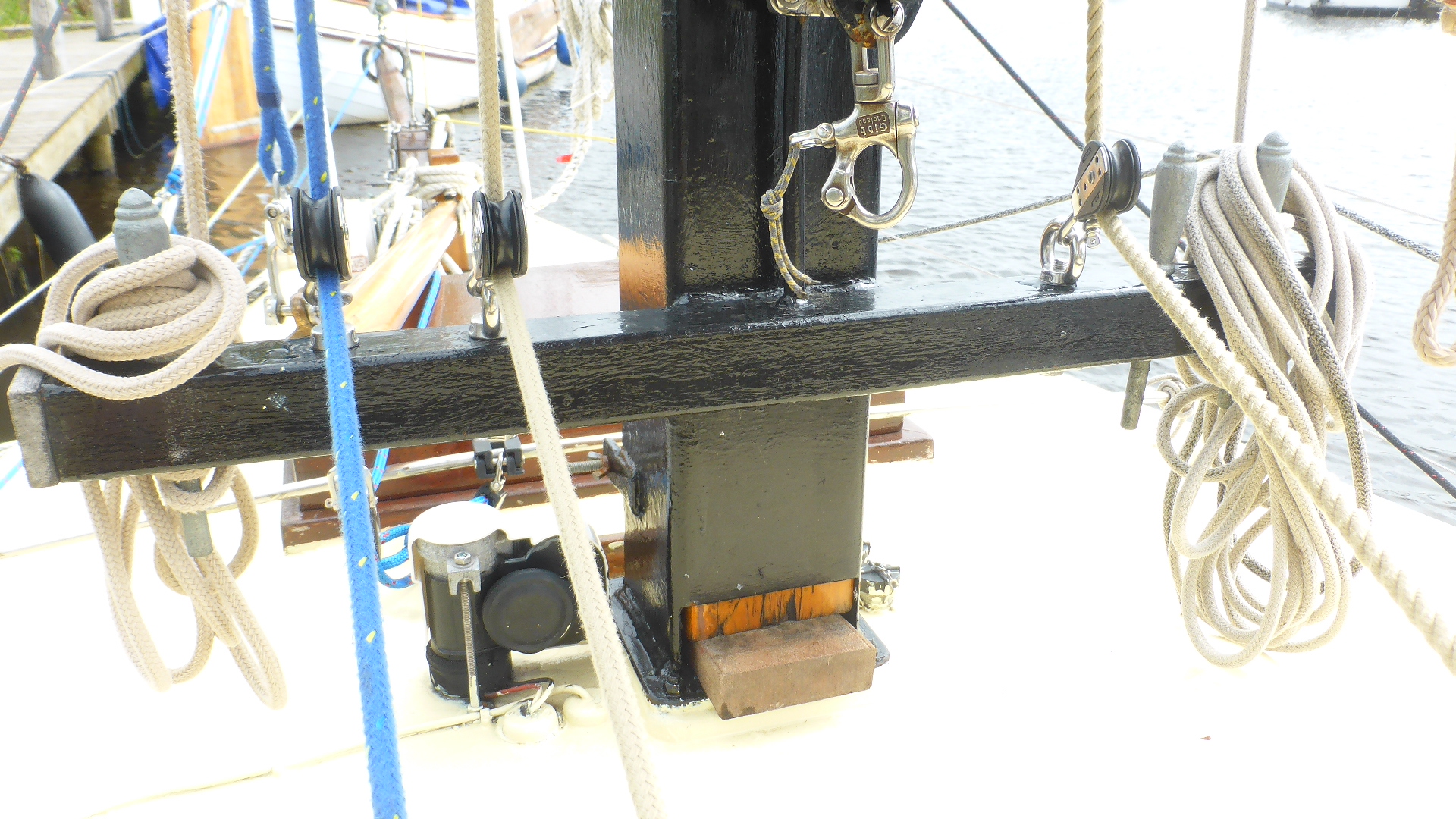
Across the pinrail from L to R: topping lift; foresail halyard; throat halyard); peak halyard, improved later by running through a second block (see first picture); jib halyard. Ball bearing blocks are shackled to lifting eye nuts, bolted to the galvanised steel pinrail.
The foresail and mainsail halyards lead aft through Spinlock PXR “cleats” and they share one winch. A PXR cleat acts like a clutch, but is operated by rocking: lifting a rope rocks it back, and the rope runs free; rocking forward (usually by hand) allows the rope to run aft but not forward. All three halyards are belayed onto conventional wooden cleats mounted on the bulkhead, where there is just enough room for the coiled ropes- these cleats only need to provide somewhere to hang the coils as the PXRs take the strain.
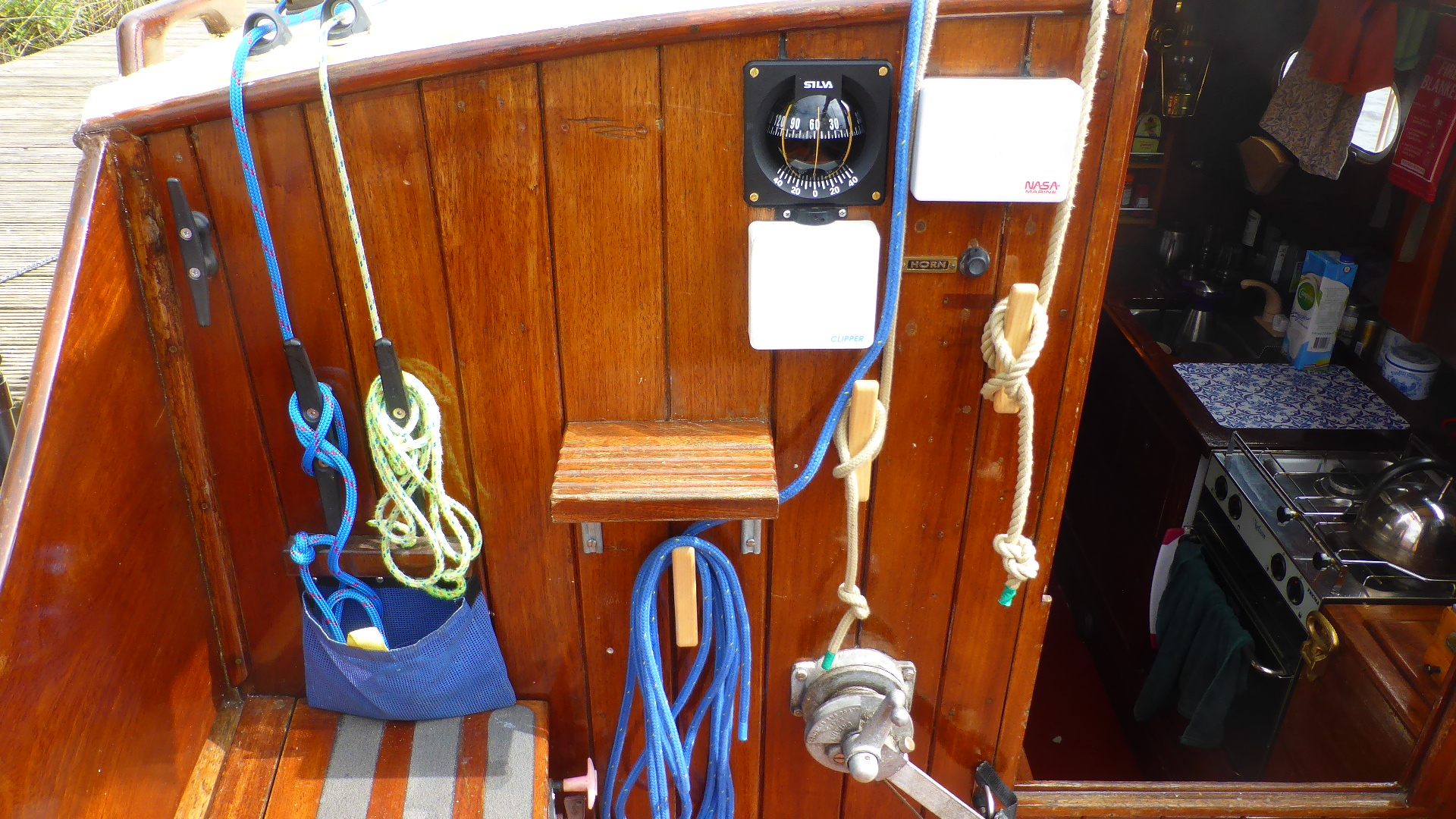
The lines all terminate on the bulkhead, but only the foresail sheet and the jib furler (left) are tied off under load. Note the step- an invaluable aid to those who dance on decks.
The usual procedure for setting the gaff mainsail goes as follows, once the sail ties are off.
- Allow some slack in the mainsheet
- Top up the boom (the topping lift is accessible through the forward hatch)
- With the PXRs acting as clutches, pull both mainsail halyards together until the luff of the sail is extended
- Give the throat halyard another pull to lift the tack. The weight of the wooden boom is sufficient to stretch out the luff, and the braid-on-braid halyard allows very little stretch
- Haul up the peak halyard until the sail is nearly full, then use the winch to set the correct sail shape. (The peak halyard is made from Jimmy Green’s 3-strand LIROS Polyester, which allows some stretch under shock loads. I use it for the mainsheet too.)
- Slacken the topping lift.
The ability to adjust the peak halyard from the cockpit, which gives a good view of the set of the mainsail, has been one of the greatest benefits of moving the lines back.
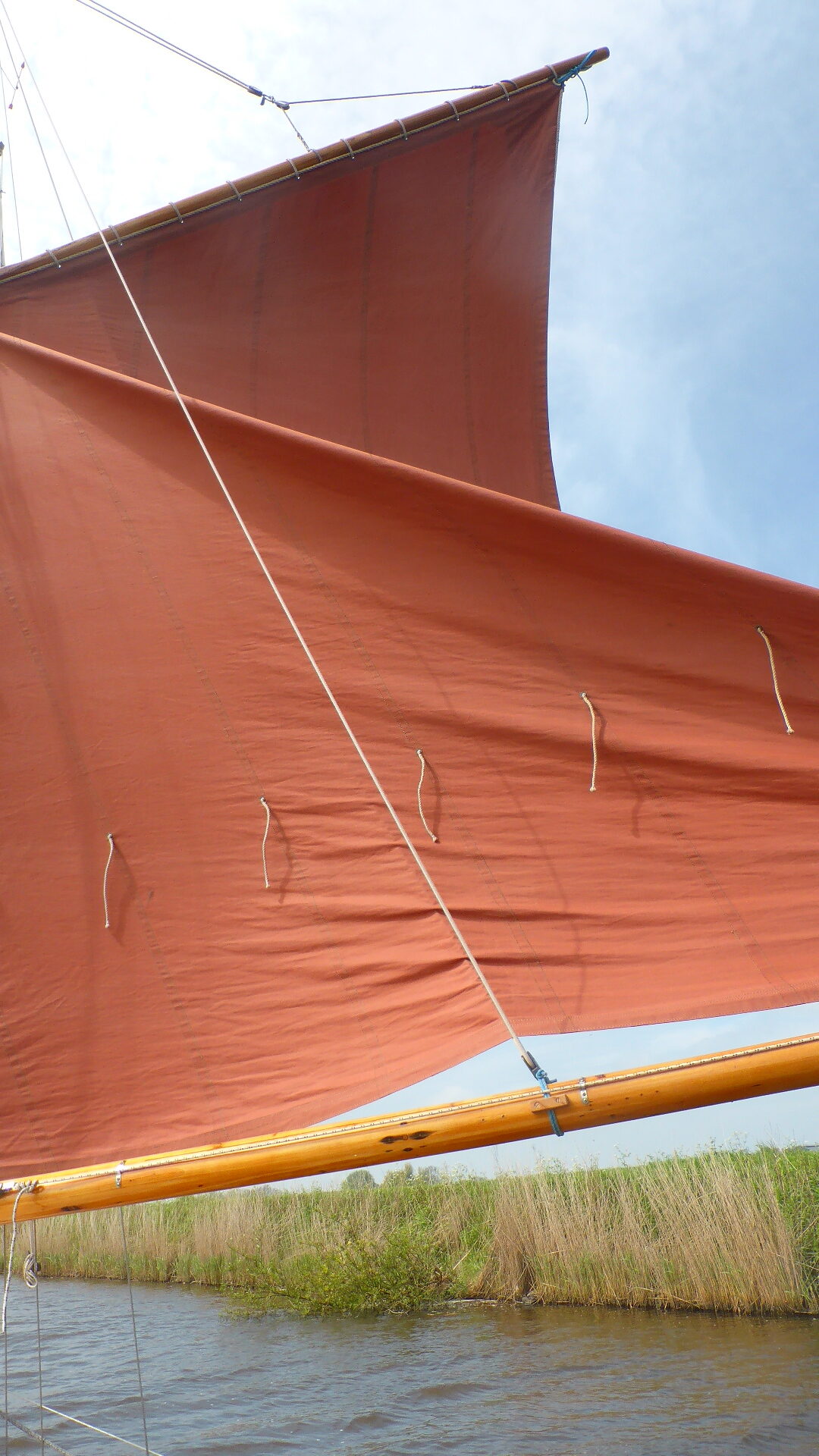
In light winds, partially lowering the peak on a run (whilst the topping lift takes the strain) produces a ‘bag’ which takes the effort forward whilst at the same time makes gybing less likely.
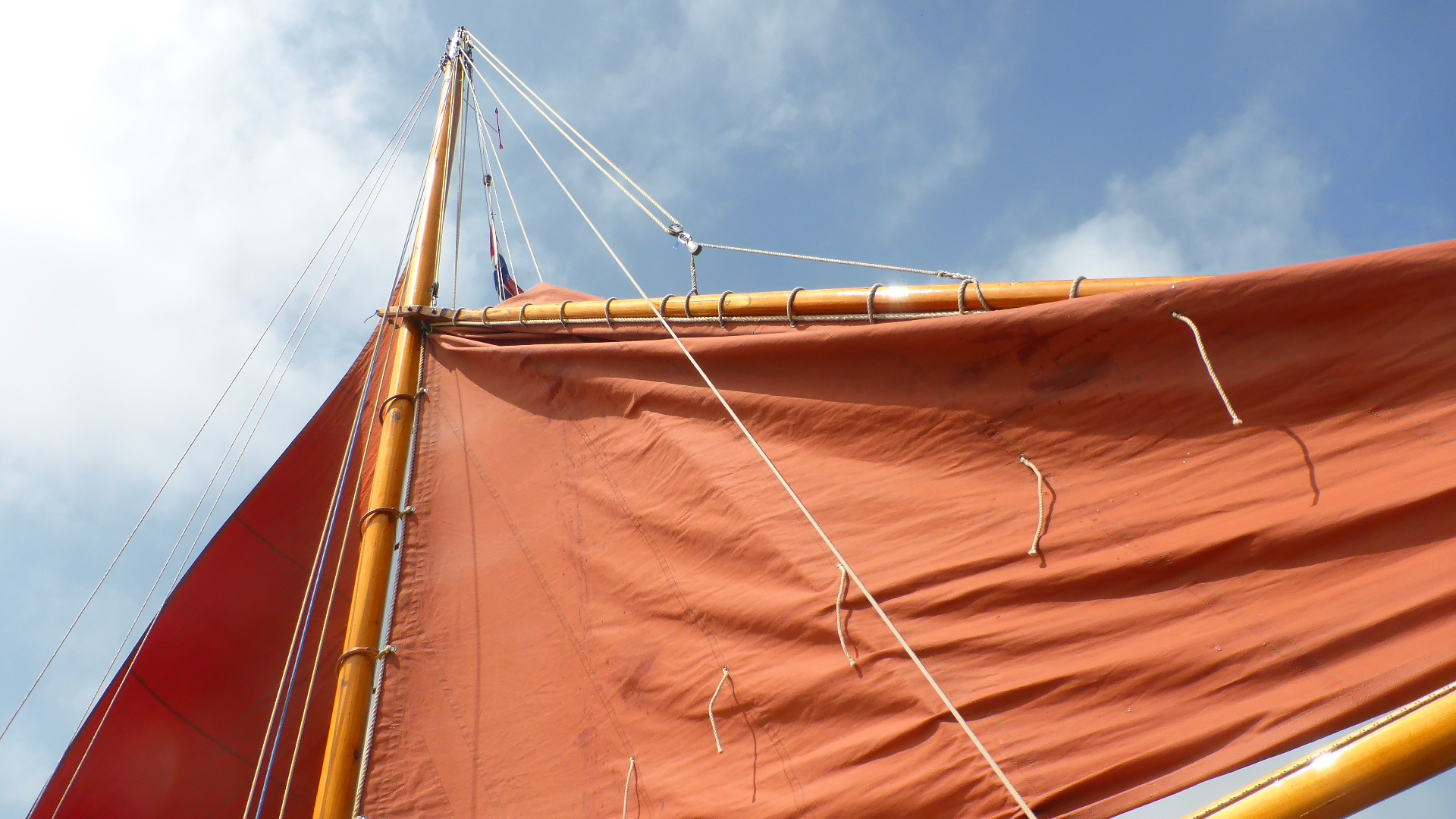
When running in stronger winds, lowering the gaff further takes the weight off the tiller. Provided that the gaff end stays well within the topping lift, the gaff can be lowered until it lies between the throat and the clew of the mainsail.
The whole mainsail can be lowered in a few seconds from the cockpit by raising both PXRs simultaneously and allowing the two halyards to run out through my hands. The topping lift- which is a single rope running down one side of the sail, through a block lashed to the boom and back up the other side- contains the sail reasonably well.
The foresail can be raised nice and tight using the same halyard winch. How, then, to lower the foresail from the cockpit? Here, I admit, I may have strayed into eccentricity. A length of 6mm ‘Lastoflex’ shock cord runs down from the masthead, through a block at the stem head and is clipped to the peak of the foresail. As the sail is raised, the shock cord extends (within its 100% limit). To bring the sail down in a hurry, point the boat into the wind and let off the foresail PXR. The whole sail can be down in a couple of seconds; if you get it right, the foresail boom can land inside the guard rails too.
Both the mainsail and the foresail need tidying after lowering, but all the power is out of the sails and I can choose my time and place to take my stroll on deck.
PS: For those unfamiliar with the Finesse as a gaff cutter, and particularly with a boomed foresail (pivoting on the Sampson post), here are some tricks that we have found:
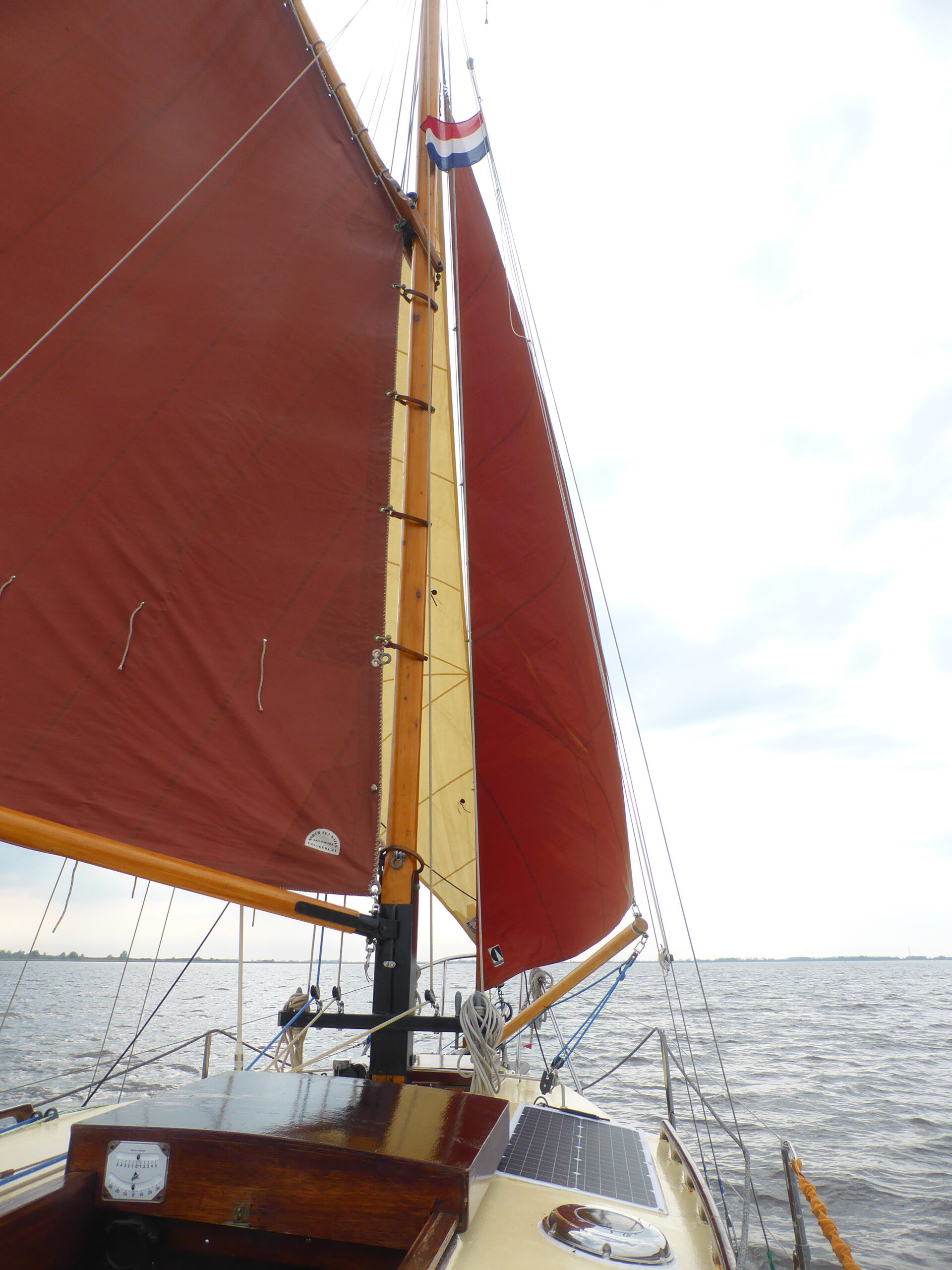
On a run, the foresail can goosewing by itself. We found that the more that the boom is allowed to rise, the easier it settles to this task. (In the Netherlands, the goosewing is called a ‘milkmaid’.) The foresail can also sometimes spill into the jib, which goosewings on the same side as the mainsail.
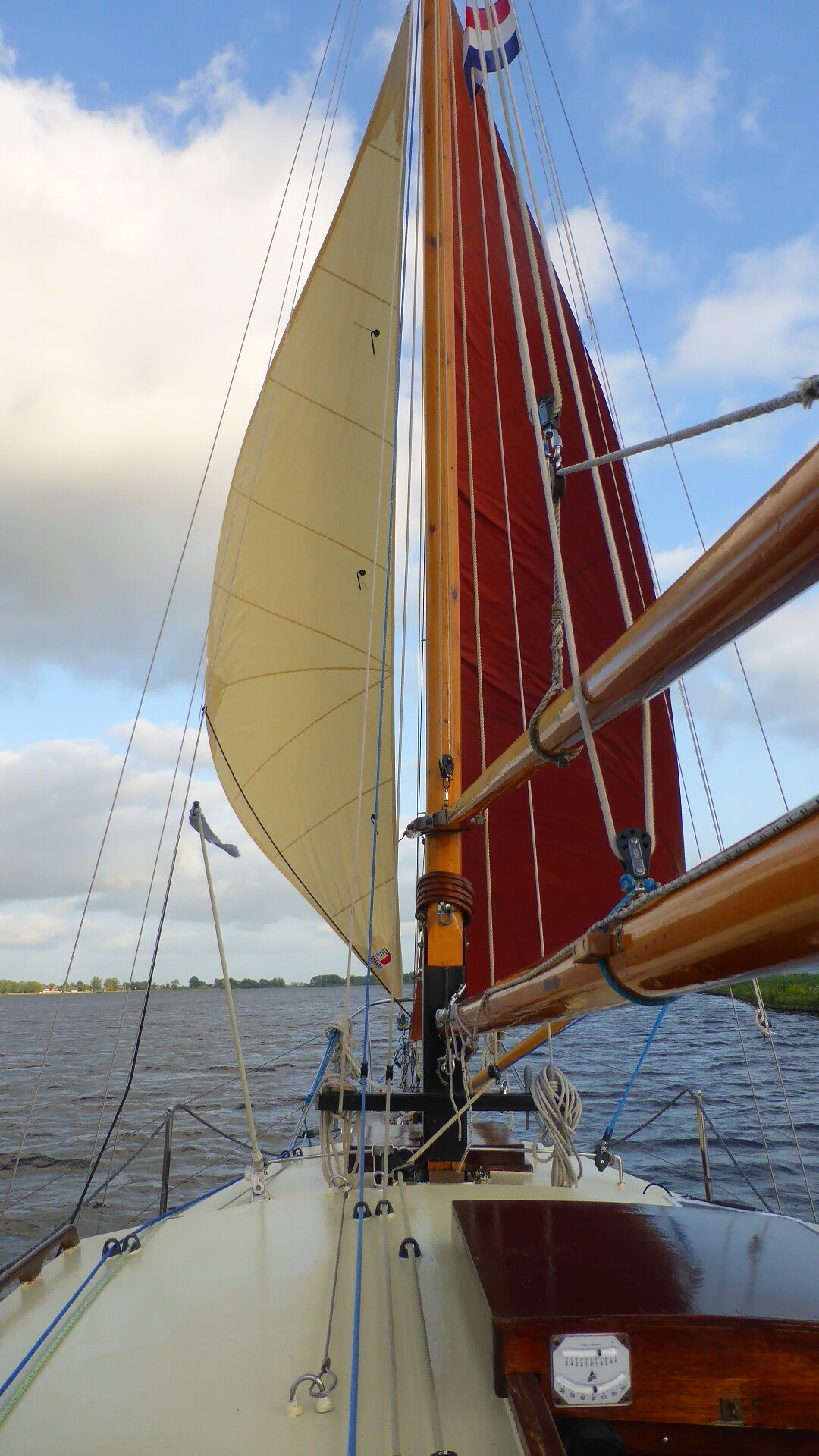
I didn’t know she could do this! The mainsail wasn’t bent on, but on a quick late-evening dash across the Sneekermeer the foresail proved that it can spill wind into the jib, thus setting twin headsails for a run before the wind.


